History
Mauldin was an 18-year-old soldier training with the 45th Infantry Division in 1940. He cartooned part-time for the camp newspaper. Near the end of 1941 the Japanese attacked Pearl Harbor, and the US entered World War II. Mauldin was sent to combat, influencing his cartoons. They gradually became darker and more realistic in their depiction of the weariness of the enduring miseries of war. [2] He extended the bristles on their faces and the eyes – "too old for those young bodies", as Mauldin put it [2] – showed how much Willie and Joe suffered. In most cartoons, they were shown in the rain, mud, and other dire conditions, while they contemplated the whole situation. [3]
In the early cartoons, depicting stateside military life in barracks and training camps, Willie was a hook-nosed, smart-mouthed Chocktaw Indian, while Joe was his red-necked straight man. But over time, the two became virtually indistinguishable from each other in appearance and attitude.
While Mauldin was praised for his realistic depictions of what most soldiers felt during war-time, he was less popular with some officers, however. General George S. Patton, Jr. in particular felt offended by the cartoons. [2] Mauldin was ordered to meet him in March 1945 in Patton's quarters in Luxembourg, where Patton complained about the scruffiness of the characters and blamed Mauldin for disrespecting the army and "trying to incite a mutiny". [4] But Dwight Eisenhower, Supreme Commander European Theater, told Patton to leave Mauldin alone, because he felt that Mauldin's cartoons gave the soldiers an outlet for their frustrations. The War Department supported their syndication. [5] The cartoons helped publicize the ground forces and showed the grim side of war, demonstrating that victory would require repeated sacrifices. [6]
Stephen Ambrose, author of Band of Brothers , praised Mauldin's work: "More than anyone else, save only Ernie Pyle, he caught the trials and travails of the GI. For anyone who wants to know what it was like to be an infantryman in World War II, this is the place to start – and finish." [7]
Publication history
The cartoons were published in the 45th Division News from 1940 until November 1943, when the Mediterranenean edition of the Stars and Stripes took them over. Starting April 17, 1944, Mauldin's editor arranged for syndication by United Feature Syndicate as Up Front. [1] As of 1945, according to a Time report, the cartoons were published in 139 newspapers. [8] The title changed to Sweatin' It Out on June 11, 1945, then Willie and Joe on July 30, 1945. [1] The strip lasted until April 8, 1948. [1]
Mauldin received two Pulitzer Prizes for cartooning, one in 1945 and one in 1959. By the end of the war, he also received the Army's Legion of Merit for his cartoons. Mauldin planned for Willie and Joe to be killed on the last day of combat, but Stars and Stripes staff dissuaded him. He tried to bring them into civilian life, but could not find a successful way to do that. He discusses this in his memoir, Back Home, in 1947. [9]
Mauldin occasionally drew new cartoons of "Willie and Joe" after the war. He drew them to commemorate the funerals of people he admired, such as generals Omar Bradley and George C. Marshall and fellow cartoonist Milton Caniff.
Mauldin retired in 1991. The pair reappeared in a 1998 Veterans Day strip of the popular comic Peanuts , using art that had been copied out of a 1944 Willie and Joe panel. [10] Charles M. Schulz, creator of Peanuts and himself a World War II Infantry combat veteran, was a personal friend of Mauldin's and considered him a hero. [11]
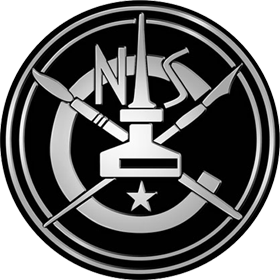
The National Cartoonists Society (NCS) is an organization of professional cartoonists in the United States. It presents the National Cartoonists Society Awards. The Society was born in 1946 when groups of cartoonists got together to entertain the troops. They enjoyed each other's company and decided to meet on a regular basis.
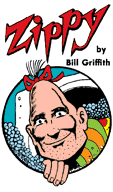
Zippy the Pinhead is a fictional character who is the protagonist of Zippy, an American comic strip created by Bill Griffith. Zippy's most famous quotation, "Are we having fun yet?", appears in Bartlett's Familiar Quotations and became a catchphrase. He almost always wears a yellow muumuu/clown suit with large red polka dots, and puffy, white clown shoes. Although in name and appearance, Zippy is a microcephalic, he is distinctive not so much for his skull shape, or for any identifiable form of brain damage, but for his enthusiasm for philosophical non sequiturs, verbal free association, and pursuit of popular culture ephemera. His wholehearted devotion to random artifacts satirizes the excesses of consumerism.

Charles Monroe "Sparky" Schulz was an American cartoonist, the creator of the comic strip Peanuts which features his two best-known characters, Charlie Brown and Snoopy. He is widely regarded as one of the most influential cartoonists in history, and cited by many cartoonists as a major influence, including Jim Davis, Murray Ball, Bill Watterson, Matt Groening, and Dav Pilkey.

Peanuts is a syndicated daily and Sunday American comic strip written and illustrated by Charles M. Schulz. The strip's original run extended from 1950 to 2000, continuing in reruns afterward. Peanuts is among the most popular and influential in the history of comic strips, with 17,897 strips published in all, making it "arguably the longest story ever told by one human being"; it is considered to be the grandfather of slice of life cartoons. At the time of Schulz's death in 2000, Peanuts ran in over 2,600 newspapers, with a readership of roughly 355 million across 75 countries, and had been translated into 21 languages. It helped to cement the four-panel gag strip as the standard in the United States, and together with its merchandise earned Schulz more than $1 billion.
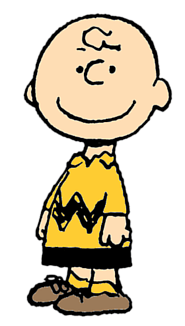
Charles "Charlie" Brown is the principal character of the comic strip Peanuts, syndicated in daily and Sunday newspapers in numerous countries all over the world. Depicted as a "lovable loser", Charlie Brown is one of the great American archetypes and a popular and widely recognized cartoon character. Charlie Brown is characterized as a person who frequently suffers, and as a result, is usually nervous and lacks self-confidence. He shows both pessimistic and optimistic attitudes: on some days, he is apprehensive to even get out of bed because he is unable to face the world, but on others, he hopes for the best and is determined to accomplish things. Charlie Brown is easily recognized by his round head and trademark zigzag patterned shirt.

William Henry Mauldin was an American editorial cartoonist who won two Pulitzer Prizes for his work. He was most famous for his World War II cartoons depicting American soldiers, as represented by the archetypal characters Willie and Joe, two weary and bedraggled infantry troopers who stoically endure the difficulties and dangers of duty in the field. His cartoons were popular with soldiers throughout Europe, and with civilians in the United States as well. However, his second Pulitzer Prize was for a cartoon published in 1958, and possibly his best-known cartoon was after the Kennedy assassination.

Elzie Crisler Segar, known by the pen name E. C. Segar, was an American cartoonist best known as the creator of Popeye, a pop culture character who first appeared in 1929 in Segar's comic strip Thimble Theatre.

Joe Sacco is a Maltese-American cartoonist and journalist. He is best known for his comics journalism, in particular in the books Palestine (1996) and Footnotes in Gaza (2009), on Israeli–Palestinian relations; and Safe Area Goražde (2000) and The Fixer (2003) on the Bosnian War. In 2020, Sacco released Paying the Land, published by Henry Holt and Company.

Milton Arthur Paul Caniff was an American cartoonist known for the Terry and the Pirates and Steve Canyon comic strips.
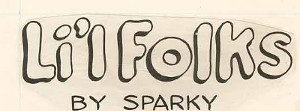
Li'l Folks, the first comic strip by Peanuts creator Charles M. Schulz, was a weekly panel that appeared mainly in Schulz's hometown paper, the St. Paul Pioneer Press, from June 22, 1947, to January 22, 1950. Schulz's first regular cartoon, Li'l Folks can be regarded as an embryonic version of Peanuts, centered around children saying things beyond their years; unlike Peanuts, Li'l Folks did not feature any recurring characters, though several themes were carried over to the later strip, including Beethoven's music ; dogs resembling Snoopy that appeared in most strips; and the name Charlie Brown.

William Henry Jackson Griffith is an American cartoonist who signs his work Bill Griffith and Griffy. He is best known for his surreal daily comic strip Zippy. The catchphrase "Are we having fun yet?" is credited to Griffith.
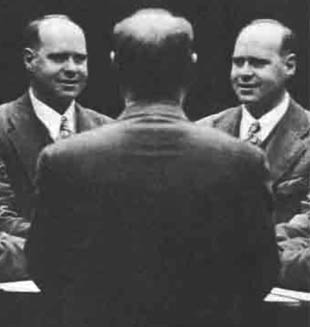
Irving David Breger was an American cartoonist who created the syndicated Mister Breger (1945–1970), a gag panel series and Sunday comic strip known earlier as Private Breger and G.I. Joe. The series led to widespread usage of the term "G.I. Joe" during World War II and later. Dave Breger was his signature and the byline on his books. During World War II, his cartoons were signed Sgt. Dave Breger.

Krazy Kat is an American newspaper comic strip, created by cartoonist George Herriman, which ran from 1913 to 1944. It first appeared in the New York Evening Journal, whose owner, William Randolph Hearst, was a major booster for the strip throughout its run. The characters had been introduced previously in a side strip with Herriman's earlier creation, The Dingbat Family, after earlier appearances in the Herriman comic strip Baron Bean. The phrase "Krazy Kat" originated there, said by the mouse by way of describing the cat. Set in a dreamlike portrayal of Herriman's vacation home of Coconino County, Arizona, KrazyKat's mixture of offbeat surrealism, innocent playfulness and poetic, idiosyncratic language has made it a favorite of comics aficionados and art critics for more than 80 years.
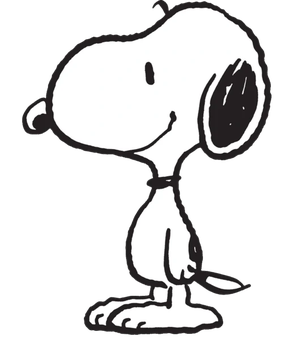
Snoopy is an anthropomorphic beagle in the comic strip Peanuts by Charles M. Schulz. He can also be found in all of the Peanuts films and television specials. Since his debut on October 4, 1950, Snoopy has become one of the most recognizable and iconic characters in the comic strip and is considered more famous than Charlie Brown in some countries. The original drawings of Snoopy were inspired by Spike, one of Schulz's childhood dogs.
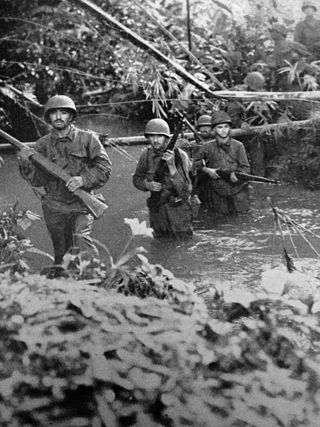
Dogface is a nickname for a United States Army soldier, especially an enlisted infantryman. The term gained widespread use during World War II.
Todd DePastino is an American author and history professor.
During World War II, Egbert White (1894–1976) had a major role in establishing newspapers for US soldiers that were written and edited by enlisted men, not by the Army top command. He had served with the Stars and Stripes newspaper during World War I and between the wars worked in advertising.
William Garnet "Bing" Coughlin was a Canadian World War II cartoonist. His mother remarried after his father's death, and the family moved to Philadelphia in 1923, where he enrolled in the Pennsylvania School of Industrial Art. After graduation, he went into advertising art. Coughlin met and married his wife Margaret (Peg) White in 1929.
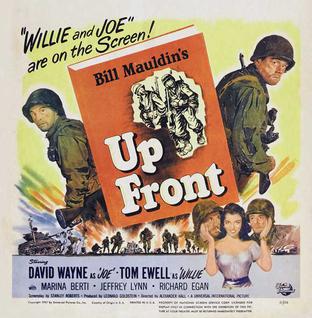
Up Front is a 1951 American comedy film directed by Alexander Hall and starring Tom Ewell and David Wayne very loosely based on Bill Mauldin's World War II characters Willie and Joe. Mauldin repudiated it and refused his advising fee; he claimed never to have seen it. It takes place during the Italian Campaign of World War II.
Prior to Pearl Harbor and the United States becoming involved in World War II, private comic book publishers and later government comic book publications increased and gained popularity among the foreign and domestic populations and Allied forces. Once the U.S. entered World War II, comic book sales greatly increased. Between 1941 and 1944 comic book sales doubled from 10 million to 20 million copies per month. As the popularity of the comics grew, companies such as DC Comics and Marvel Comics and their predecessor companies started developing comics geared for military audiences. Evidence of the growth and popularity of these comics and their pro-U.S. stance and messaging is noted by Comic Books Go to War;
Between 1940 and 1945, circulation numbers would triple and at military post exchanges, comic books outsold standard fare such as Life and Reader's Digest by as much as ten to one.
















